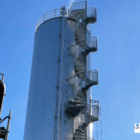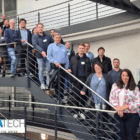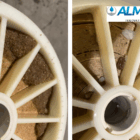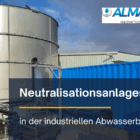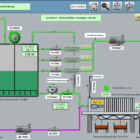An anion exchanger is an essential component of ion exchange systems used in industrial water treatment and wastewater treatment to remove anionic impurities (negatively charged ions) from aqueous solutions. The anion exchanger consists of a special ion exchange resin that is able to bind anions such as chloride (Cl-), sulphate (SO₄²-), nitrate (NO₃-) and phosphates (PO₄³-) from the water and replace them with other anions such as hydroxide ions (OH-).
Anion exchangers are indispensable in many water treatment applications, especially in the demineralization (desalination) of water, the removal of pollutants and the regeneration of process water. They are often used in conjunction with cation exchangers to produce demineralized (demineralized) water.
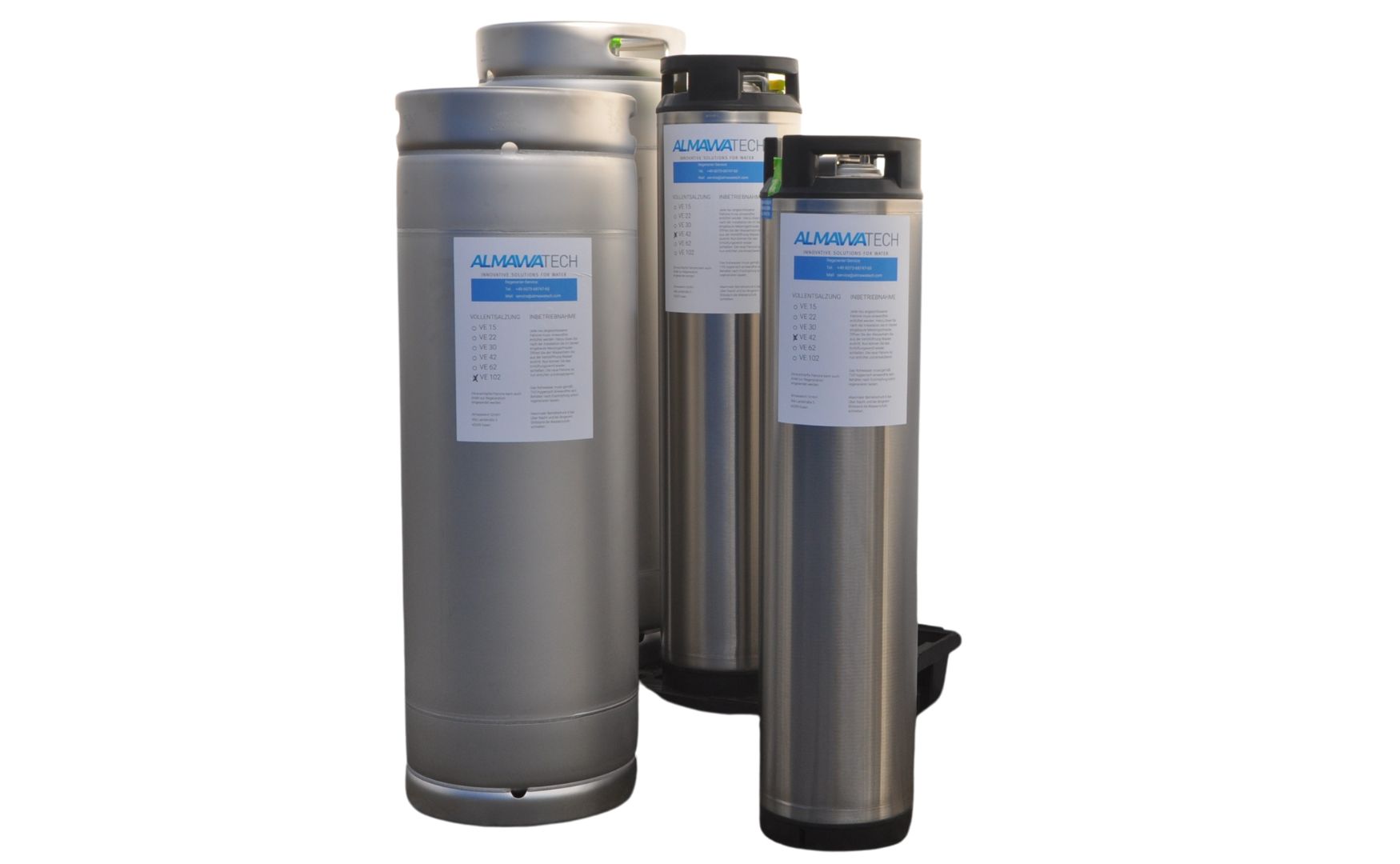
Photo: DI cartridge filled with ion exchange resin(ALMA ION)
Table of contents
Technical background
The anion exchange is based on the electrostatic interaction between the negatively charged anions in the water and the positively charged active groups on the resin material. The anion exchange resin usually consists of a porous, polymeric carrier material (such as polystyrene-divinylbenzene) with functional groups that have a high affinity for anions.
How the anion exchange works:
Anion exchange resin: The resin contains functional groups that are positively charged, such as quaternary ammonium groups or amino groups. These groups attract negatively charged anions and bind them.
Exchange process: When the contaminated water flows through the ion exchange resin, the unwanted anions (e.g. chloride, nitrate, sulphate) are bound to the functional groups of the resin. At the same time, the anions that were originally bound to the resin (mostly hydroxide ions (OH-)) are released into the water.
Regeneration: As soon as the capacity of the anion exchanger is exhausted, the resin must be regenerated. This process is carried out by rinsing the resin with an alkaline solution (e.g. sodium hydroxide solution, NaOH), which displaces the bound anions and binds the hydroxide ions to the functional groups of the resin again. The resin is then ready to remove anions from the water again.
Types of anion exchange resins
Anion exchange resins can be divided into two main types:
Strongly basic anion exchangers:
- These resins contain quaternary ammonium groups that remain strongly basic under all pH conditions. They are mainly used for demineralization and can exchange anions over a wide range of pH values.
- Application: Desalination of boiler water, production of demineralized water (demineralized water), removal of silicate and nitrate.
Weakly basic anion exchangers:
- These resins contain tertiary amines, which are only basic in neutral or slightly alkaline solutions. They primarily bind weakly dissociated acids and can generally be regenerated with weaker alkaline solutions.
- Application: Removal of organic substances, such as humic acids and tannins, as well as in drinking water treatment.
Applications of anion exchange in practice
Anion exchangers are used in a variety of industrial processes:
Demineralization (demineralized water)
In the production of high-purity water, the anion exchanger is used in combination with a cation exchanger to remove almost all dissolved ions from the water. This is necessary in the pharmaceutical industry, the electronics industry, hydrogen production and the chemical industry, where high-purity water is required for boiler systems and cooling circuits.

Photo: Ion exchanger in GRP tanks(ALMA ION)
Nitrate and phosphate elimination
In wastewater treatment, anion exchangers are used to remove nitrate and phosphates from industrial and municipal wastewater. This prevents the eutrophication of water caused by high nutrient concentrations.
Chromate and sulphate elimination
In the electroplating industry and other metalworking processes, anion exchange is used to remove chromate (CrO₄²-) and sulphate from wastewater to ensure compliance with the legal limits for discharge into water bodies.
Drinking water treatment
Anion exchangers are used in the softening and desalination of drinking water, in particular to remove harmful substances such as nitrate or fluoride.
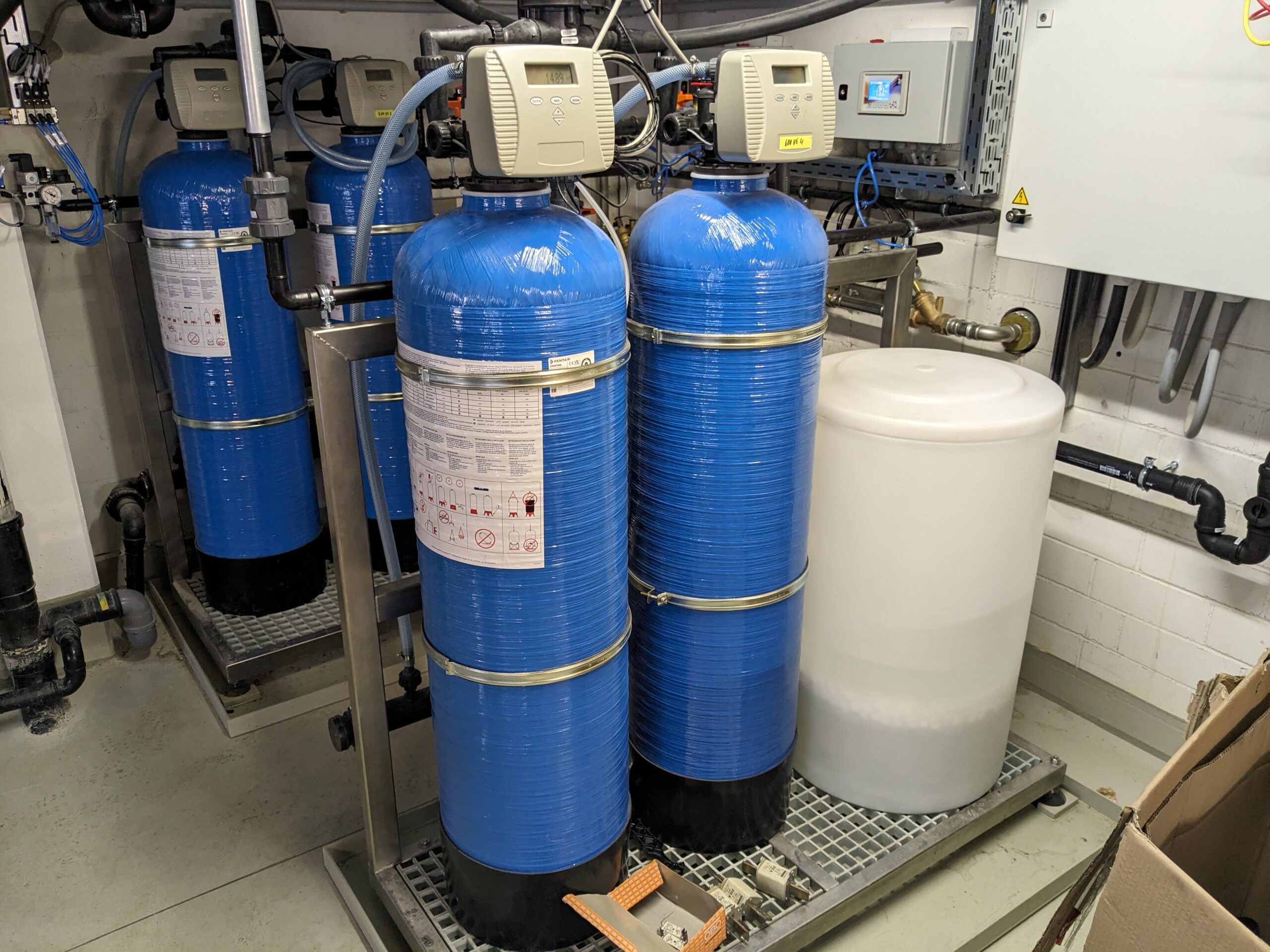
Photo: Drinking water softener with regeneration station(ALMA ION)
Advantages of anion exchange
High selectivity: Anion exchangers can be specifically adapted to certain anions, which increases their efficiency in removing targeted impurities.
Regenerability: Anion exchange resins can be reused through regeneration with alkaline solutions, which extends their service life and reduces operating costs.
Wide range of applications: Anion exchangers are used in many branches of industry, from water treatment and waste water treatment to specific processes such as electroplating and the pharmaceutical industry.
Challenges of anion exchange
Limited capacity: The capacity of an anion exchanger depends on the amount of functional groups on the resin. When these are saturated, the reactor must be regenerated in good time to ensure continuous operation.
Regeneration chemicals: Regeneration requires the use of chemicals such as caustic soda.
Conclusion
Anion exchangers are indispensable components in industrial water and wastewater treatment and are used in demineralization, nitrate and phosphate elimination and drinking water treatment. They enable the targeted removal of anions and contribute to improving the water quality in various industrial processes. A high level of efficiency and sustainability in water treatment can be achieved by selecting the right anion exchange resin for the respective water composition.
For further information on our products, please feel free to contact us at any time!


